Inle: The Medical Orisha of the Yoruba Religion

Inle or Erinle is an Orisha (deity) belonging to the Yoruba religion, which is characterized as a great sorcerer, doctor and healer. Before Ozain, he was the most knowledgeable of the power of botany and the healing properties of nature. He is considered the patron of doctors, nurses and any profession related to medicine. His essence is represented in three fundamental aspects: man, king and man-fish.
Who is Inle? Or What is Erinle?
Inle is a major Orisha (deity) of the Yoruba religion, he is known as the doctor of the Osha, for which he is considered the patron of medical sciences. He is also a skilled fisherman, and owner of the place where the waters of the river meet those of the sea, where he lives happily.
This is a deity that is also related to the extractive economy due to his knowledge of fishing and pre-horticultural gathering, in addition, he is a hunter. Many point out that their physical characteristics stand out due to their striking beauty. It has the ability to live both on land and in water. The Oddun in which he comes down to earth (Isalaye) is Okana Sode.
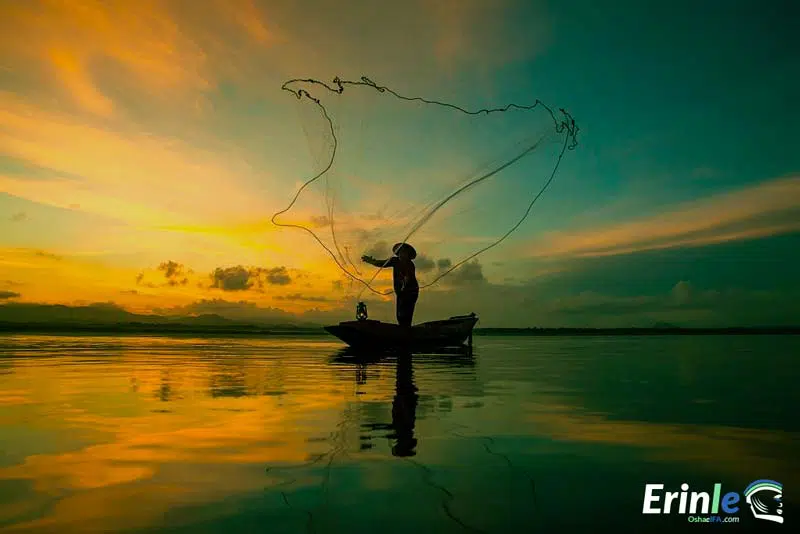
This Orisha "Inle" symbolizes mobile and variable objects. It is a reflection of hospitality, drink, vice, dissimulation, deceit, loss of reputation, hospitals, prisons, nursing homes, asylums, pious institutions, dispensaries, animal protection societies, betrayals, suicides, dependencies, escapism, isolated jobs, the occult sciences, seditious maneuvers, espionage, camouflage, hypocrisy, martyrdom, sacrifice, service and the collective unconscious.
Characteristics of the Orisha Inle (Erinle)
Between her CARACTERISTICS He highlights that he is a warrior whose body represents masculine strength and beauty, which makes him very attractive. He usually carries a winning stick spear with which he defeats his enemies and protects his children.
The number of inle
His number is 24 and all its multiples, due to the relationship that number has with its syncretism with San Rafael Arcángel, whose celebration is commemorated on October 24. The best day for your assistance and attention is Friday.
Inle soup tureen
Its receptacle is a light blue painted clay tureen that uses as a lid a plate on which its tool is placed. Next to his jar lives another tureen where the secret of Abbata is kept, Orisha inseparable from Inle.
Inle Tools
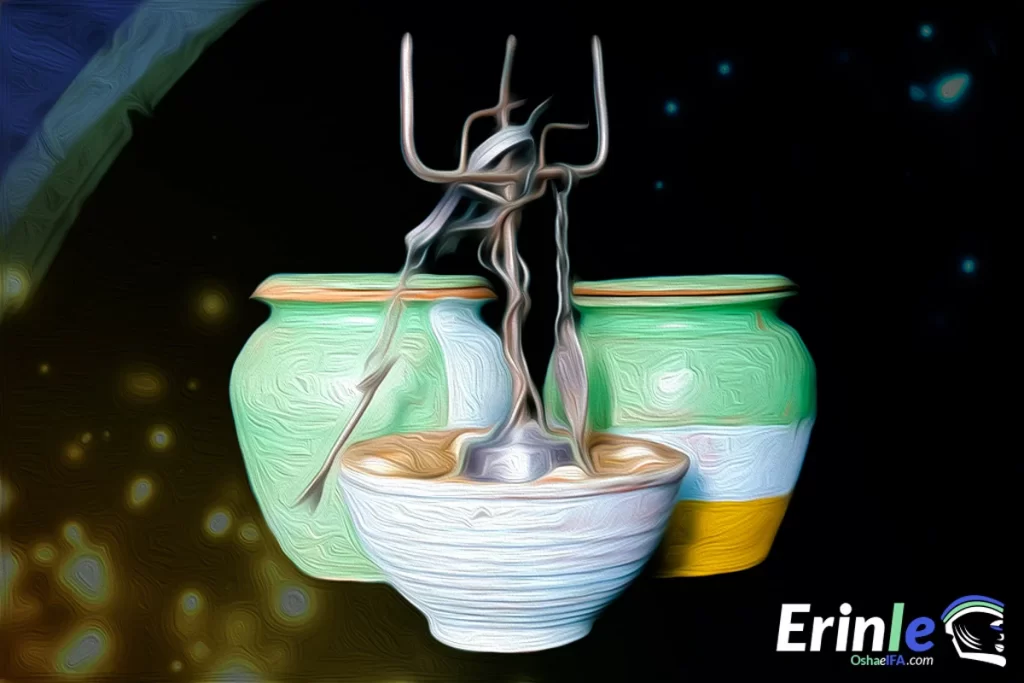
- Its main tool is shaped like a cross. Majás and fish hang from it. In the center are coiled two majás (serpents). It is made of silver or white metal.
- Use two hoops.
- A hook.
- A pita.
- A network.
- 18 snails.
- As a secret of power, snails, shells and a wire in the shape of a majá are placed on it.
Colors of Inle
Its color is blue, combined with yellow. in santeria Inle's necklaces or elekes They are made with matipó, dark green, prussian blue and coral beads. In some houses their necklaces have: 7 corals, a gold bead, a section made with a gold chain, then an amber bead, followed by 14 blue stained glass windows and in the center a little silver or gold fish is hung. .
Suit
In the case of his children, during their consecration, they are dressed in a lunch suit with a blue and white shirt, and white pants with streamers. For the coronation gown or gala gown, a jacket is placed with a sash that is tied at the waist; He wears trousers and a long cape. The entire costume is made of light green, blue and gold fabrics, regardless of whether it is a female or male initiate. His costume is adorned with sparkling stones and snails.
Inle's crown is made from blue fabrics, adorned with snails, lace and gold trimmings. It has 7 pickaxes, and 1 parrot feather.
History by Inle

Erinle was a strong, young, and physically attractive fisherman. One day working at sea Yemaya She saw it and was surprised and captivated by its beauty. She immediately approached him and invited him to her house in the sea, as long as she promised that everything she observed there would never be revealed. She did not agree to that request of hers.
It was then that Yemaya took Erinle to the bottom of the sea, where she was amazed at all that was there. Soon after, Yemaya got tired of his company and allowed him to leave, but as a precaution he disguised himself to see if he would tell his secrets when he reached land.
Yemaya cut Inle's tongue
Once on land, Inle, eager to share his experience, tried to start talking about it, being surprised by Yemaya who immediately cut his tongue so that he could not speak again.
This is the reason why Inle speaks through Yemaya's dilogún (Snail).
Pataki (story) of Inle and Abata
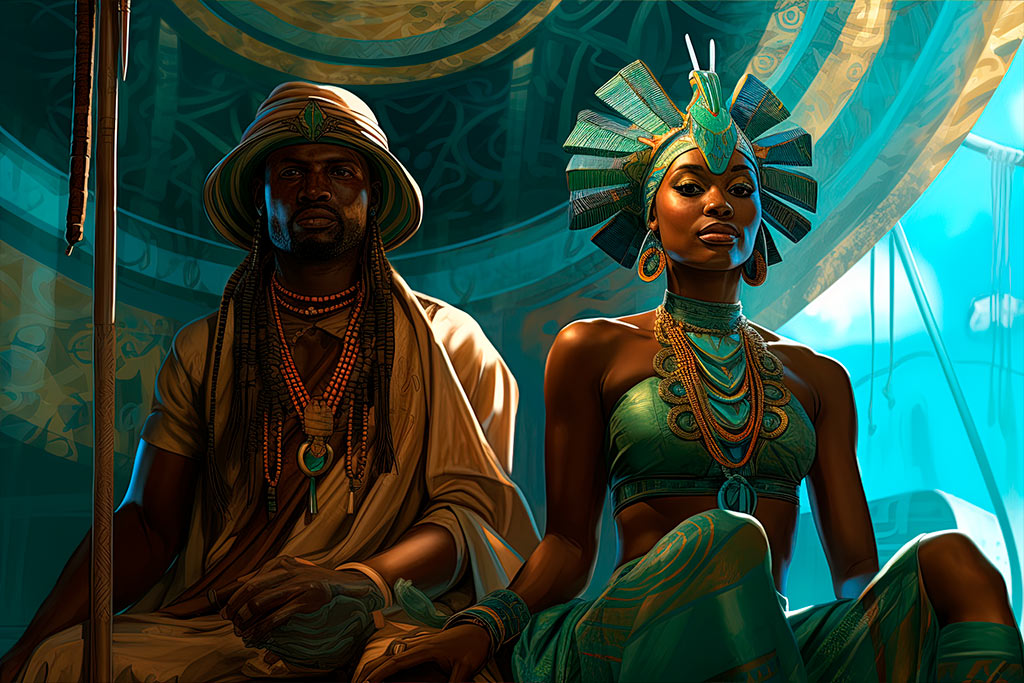
In the lands of ancient Yoruba, Ábata walked on the shores of a raging sea. The waves roared and the waters churned, denying him the opportunity to fish. His anguish was not only because of the fish, but because his father, with each passing day, lost a little more of his sight.
Torn by despair, Ábata raised a prayer to heaven, begging Olofin: "If you consider it in your immense goodness, allow me to fish just once, to restore light to my father's eyes."
Almost as an answer to her plea, the firmament was covered with clouds and from one of them, with grace and power, Inlé descended. "I'll help you," she promised, "but first I need you to share the water from your güiro with me."
Ábata, without hesitation, offered his precious liquid. Immediately afterwards, the Orisha inle He intoned an ancient invocation and raised his staff toward the sea. The waters calmed and, from its depth, a brilliant Ejá-Oro arose, a fish that would not only feed, but had the power to heal.
Thanks to the miraculous fish, Abata's father regained his sight. Since then, the young woman and the god of the sea have woven an eternal friendship, becoming guardians of the waters and protectors of life in Yoruba.
How are the children of Inle?
Inle's children are often very intuitive, empathetic, perceptive, humble, personable, sensitive, stimulating, dedicated, caring, creative, generous, romantic, bohemian, caring, friendly, dreamy, social, conservative, and godly.
When they are badly aspected, they can become clueless, unconcentrated, entangled, pessimistic, indifferent, insecure, shy, disorganized, indifferent, indecisive, weak, prone to vices, dependent, hypersensitive, talkative, arrogant, needing to be the center of attention and hypocrites.
How is Inle received in Santeria?
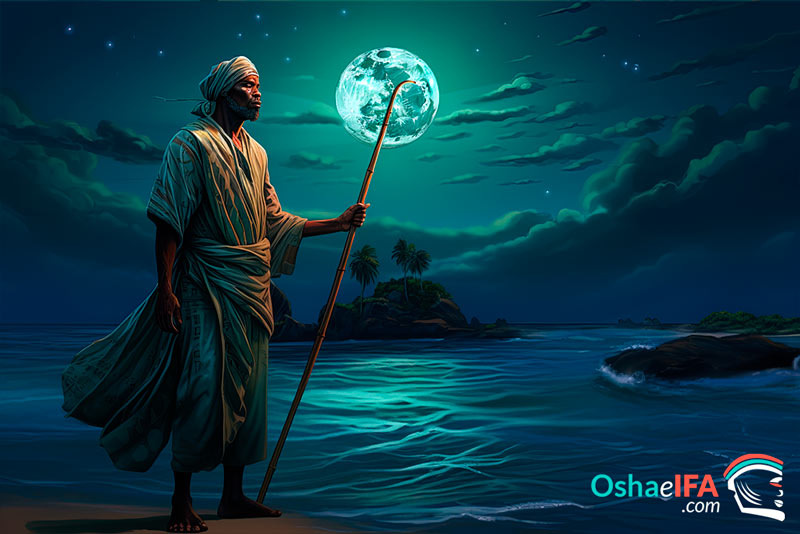
This Orisha can be given to Aleyos, Iworos and Babalawos in general. His ceremony in the Osha usually includes the usual rituals, but in addition to this, his omiero must bring a snapper fish to sacrament the water. In addition, a special table is prepared to celebrate his consecration that includes dishes to the taste of the Orisha such as snapper with orange, and a variety of sweets and delicacies.
In the case of the children of this Orisha they are not consecrated directly. His coronation in kariosha is done Yemaya with gold for Inle. In fact, he speaks in Ita imale through Yemaya's dilogún; To make this possible, Yemaya is given abo (ram) and in part another abo is given to Erinle.
Inle of Ifa
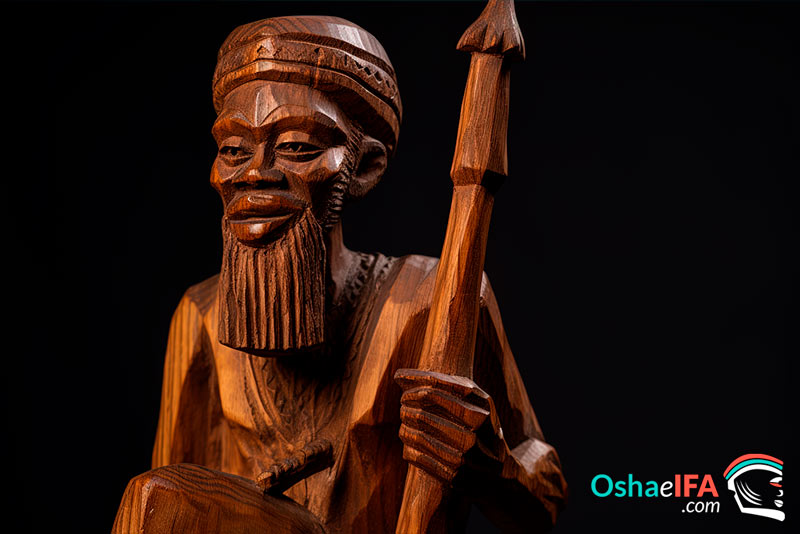
Inle is consecrated in Ifa in the oddun Iroso Umbo, where it is established that Elegua was his Oluwo and orunmila your Oyugbona. This is why this Orisha is also given by the Babalawos and carries an Ifa hand that is used for her ita imale. Its foundation is in a sealed clay jar that keeps a sacred load inside and is accompanied by a carved doll that carries a fishing rod and a hook.
You can read: All about Ozain (Osain) the Orisha of the Herbs
Erinle's family
- ABATA: is female. It is a Deity dedicated to fishing. Inle's inseparable companion. This saint is said to be Erinle's jimagua, daughter of Olosi and Olokun. Lives in the lagoons. It is believed that at night she is transfigured into a hideous image that wears light blue with a white gauze veil with snails.
- BOYUTO: he is male, it is said that he is the guardian angel of Erinle and Abata.
- OTI: it is female. It is represented as the sacred eel of the Orisha fisherman.
- YOBIA: he's male. Son of Ashikuelu and highly respected assistant to Erinle.
- LOGUN EDE: it is androgen. Son of Inle and Oshun. It has no cult. He is born in the oddun of Ifa Odi Taurus.
- ASAO: he's male. Companion of the deity of medicine. Live 6 months at sea and 6 months on land. Asao is said to be Olokun's sorcerer. He lives in a jar that is painted green.
How will Inle be served?
To attend to Inle, you can cover it with a lot of tua tua grass in your tureen. Also the jar can be filled with rainwater and a lot of oyuoro (water flower). He is very fond of almond oil and tranquil balm oil with which he can cleanse his secret or mix with their herbs in the omiero.
Adimu or inle meals
The Orisha Inle can be offered: fish seasoned with ground crackers; corn tortilla; snapper baked with orange; mashed potatoes; gofio and corn; almond sauce; pumpkin balls; salcochado yam, ekó; drunk panetelas; lettuce and watercress, sweet potato, Chinese orange. His favorite fruit is guava. He likes sweet wine.
The animals that are sacrificed to him are: ram, rooster, pigeons, guinea, all have to be white.
Erinle Herbs
- Thistle.
- vine.
- Guarianna.
- Shake shake.
- Squash.
- Red mangrove.
- Gold button.
- Pacific Ocean.
- Winning stick.
Inle syncretism in the Catholic religion
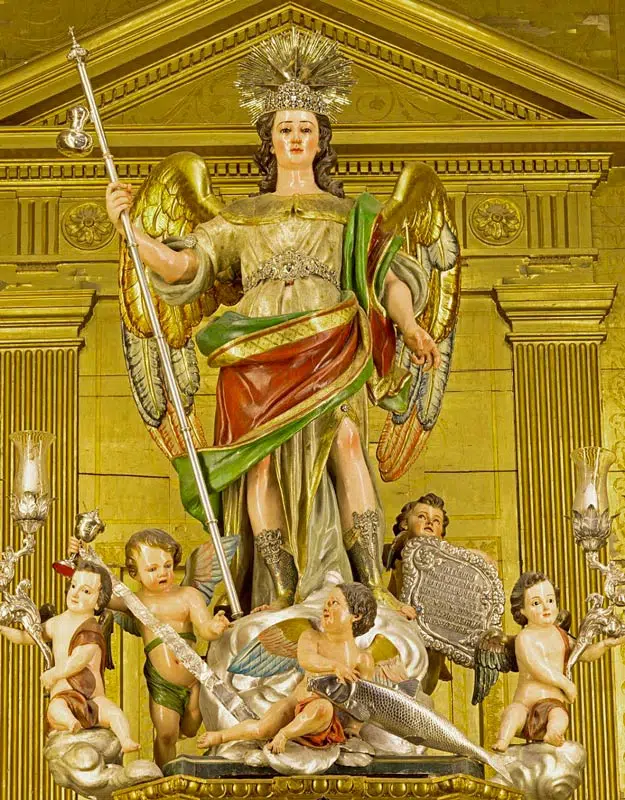
Inle in the Catholic religion is syncretized with Saint Raphael the Archangel, who is credited with having stopped the plague in the city of Cordova, Spain. Among its attributes it also has fish. In the book of Enoch Raphael is mentioned as the holy angel of human spirits and in charge of diseases and all wounds of the sons of men. The similarity that this syncretism inspires with the Orisha Erinle is evident, since both are spiritualities that protect human beings against diseases.
Likewise, it is also syncretized with San Roque, who bears a particular resemblance to the iconography of Inle. You loved spiritualities are represented with a pilgrim's dress with hat and cape. In addition, his spiritual influence is also dedicated to the protection of the sick and medical professionals.
Benefits of receiving inle?
This is an Orisha that is received to connect with the healing energy of nature. Its healing properties cover both the physical and spiritual realms, which is why it is attributed the power to heal both bodily and spiritual diseases. In addition, its radiation also offers an energy that attracts productivity, work, production and prosperity.
Safeguarding from unnecessary visits to health centers, protecting from both natural and false illnesses, as well as from prison situations. It intervenes in the balance and control of the energies of the person who receives it.
What is asked of inle?
Inle is often asked for the following reasons:
- In all kinds of afflictions and diseases that human beings can acquire.
- This Orisha (Erinle) is a prosecutor, therefore, she intervenes when there are problems of justice.
- See to it that disputes are brought to fruition.
- It is appropriate to call prosperity.
- Contribute to getting jobs in a timely manner.
- Helps keep secrets that you do not want to spread.
- It is excellent for fighting spiritual wars.
Inle Prayer (oriki)
(I praise and pray to the spirit of ocean medicine)
Mo juba Inle a bata n 'se ma ko lewe
Mo juba Erinle ni ala wins ori we lekan ko iku a juba. TOse.
We respect Inle who brings us healing herbs
We respect Erinle who protect us from death. Asé.
I sing to Inle
Akuon: ayaya oinleo oinleo oinle ayaya oinleo.
Chorus: oinleo oinleo oinle ayaya oinleo.
Akuon: oinleo oinleo oinle ayaya oinleo.
Chorus: oinleo oinleo oinle ayaya oinleo.
Akuon: oile Inle inleo oinle Inle inleo.
Chorus: oile ile inleo oinle.
Akuon: Ile inleo.
Chorus: oinle oinle oinle oinle.
Akuon: Erinle inleo.
Chorus: Oinle Ile ileo oile.
Akuon: oinle jele agolone. Oinle jele agolona agolona inle made.
Chorus: oinle jele agolone.
Akuon: taraya cocco taraya taraya cocco taraya.
Chorus: taraya cocco taraya taraya.
Akuon: cocco taraya
Chorus: taraya cocco taraya taraya.
Akuon: Erin leus.
Chorus: Oinle Erinle ileo oile.
Akuon: Ile ileus.
Chorus: oinle Erinle ileo oinle.
Akuon: cocco taraya
Chorus: taraya cocco taraya taraya.
Akuon: cocco taraya
Chorus: taraya cocco taraya taraya.
Works or Ebboses with Inle
Work with erinle for love
It is placed inside a plate or basket with a blue ribbon on the edges: 7 roasted sweet potato wheels with honey, and a lot of roasted baby corn. A bottle of honey is placed on one side, a bottle of honey on the other and a sweet wine bottle in front. The Orisha is realized that this treat is given to him to sweeten and soothe the love and feelings of the person he wishes to attract. It is left there for 7 days.
Ebbo with inle for health
Inle is fed two white roosters with which the sick person is cleaned beforehand. This will be offered where the waters of the sea and the river meet, causing a whirlpool with the hands when the animals immolate themselves. The Orisha will be told that this is done to take away all the illnesses that the person has. This work must be officiated by an Iworo or Babalawo with full knowledge of the proper ritual.
Work for enemies
When you want to fight with Erinle, you put a pointed victorious stick in her tureen and there the name of the enemy is nailed, telling the Orisha of the war that you have.
Erinle quotes
Inle says: "You are not alone my son, I will always bring the balance of your health and prosperity."
Erinle says: "I will always be the one who oversees your war, there is no falsehood or betrayal that you cannot win with me."


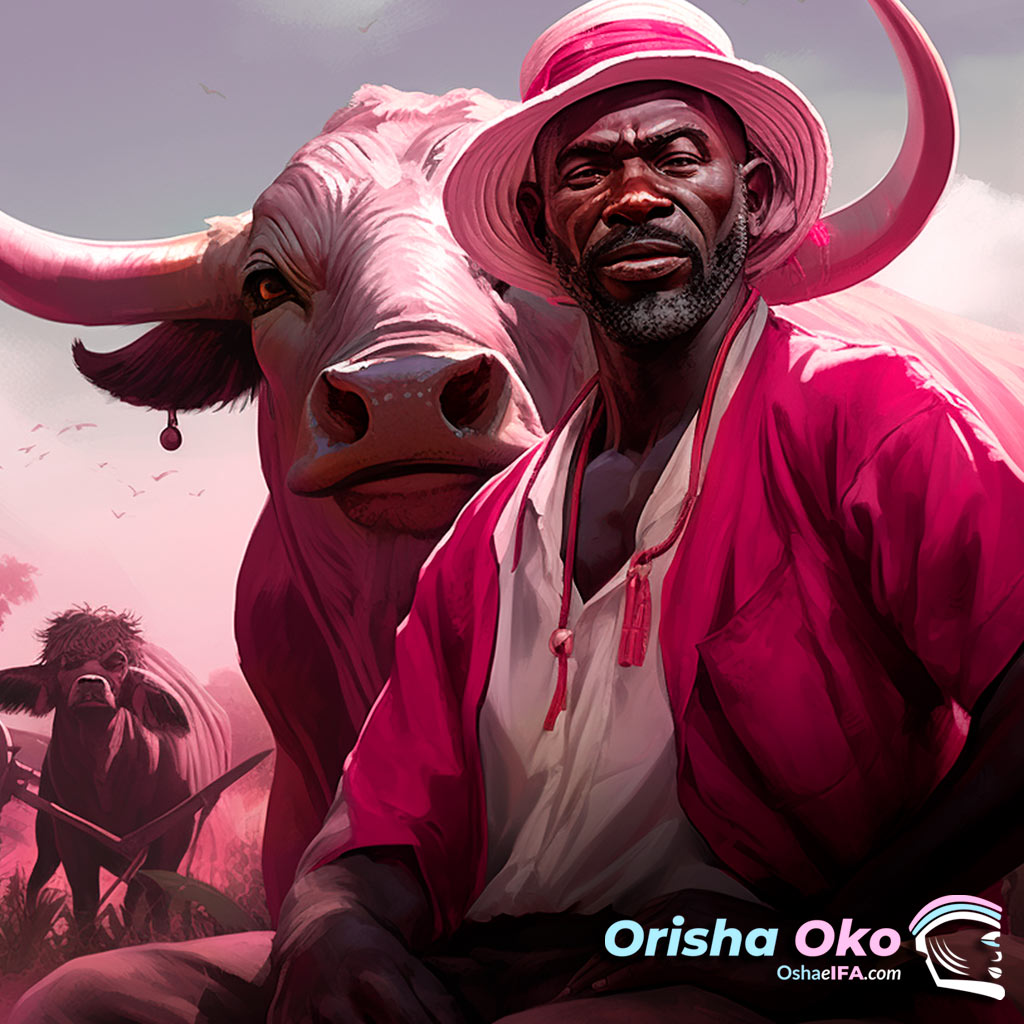
Today, August 30, I received Inle and Albata so that he always gives me health, above all, and for all my family saints and blood
I am from an Oyá mother and an Inle father. I admire and have a beautiful pride in my religion.